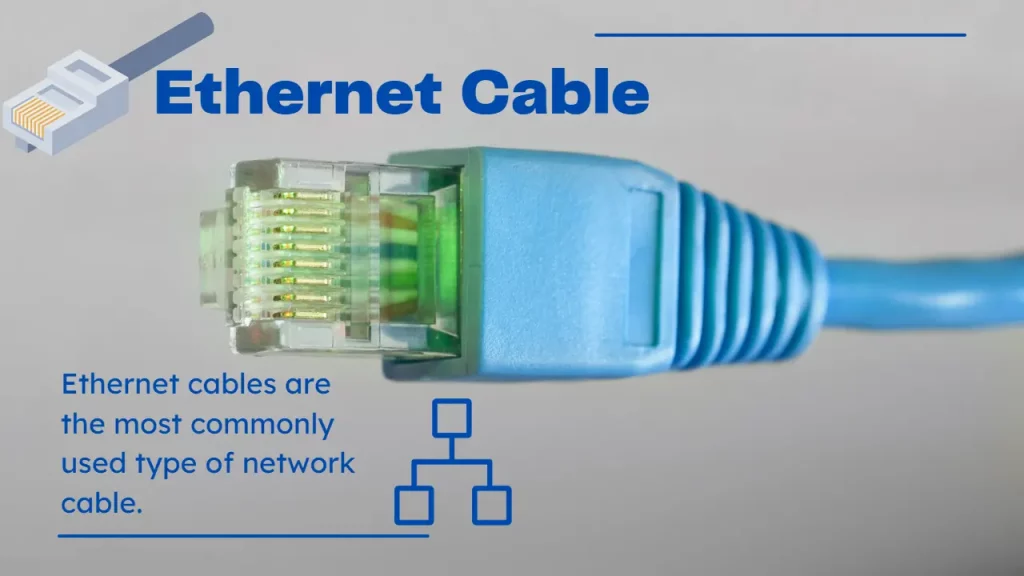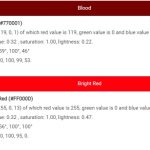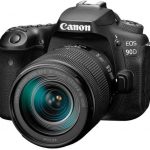An Ethernet cable is a type of cable used to connect devices to a local area network (LAN) using the Ethernet protocol. Ethernet cables are used in a wide variety of applications, including home and office networks, commercial and industrial networks, and other applications such as audio/visual distribution systems.
Table of Contents
What Does an Ethernet Cable Look Like?
Ethernet cables are composed of four twisted pairs of copper wires, which are encased in a plastic sheath. The wires are twisted in pairs to reduce electromagnetic interference (EMI) from other cables and devices. The wires are also color-coded to make it easier to identify the correct wire when connecting devices. The most common colors used are blue, orange, green, and brown.

The ends of an Ethernet cable are typically terminated with an RJ45 connector, which is a standard 8-pin connector that allows the cable to be plugged into a network device such as a router, switch, or computer. The RJ45 connector is designed to fit into an RJ45 jack, which is typically found on the back of a network device.
When connecting an Ethernet cable, it is important to ensure that the wires are connected correctly. This is done by matching the colors of the wires on the cable to the colors of the pins on the RJ45 connector. The wires should be inserted into the connector so that the colors match up, and the cable should be securely inserted into the RJ45 jack.
What Does an Ethernet Cable Do?
It is a physical connection that carries data between two devices, such as a computer and a router. The cable is made up of four twisted pairs of copper wires, each with its own shielding.
Ethernet cables are used to connect computers, routers, modems, switches, and other network devices. They are also used to connect to the internet, allowing users to access the World Wide Web.
When connecting two devices, an Ethernet cable must be used to ensure that the connection is secure and reliable. In addition, Ethernet cables are used to connect devices to other networks, such as a local area network (LAN) or a wide area network (WAN).
Categories of Ethernet Cables
Ethernet cables are available in a variety of lengths and types, including:
- Cat5 cables are the most common and can transmit data at speeds of up to 100 Mbps.
- Cat5e cables are an enhanced version of Cat5 and are capable of carrying data at speeds up to 1000 Mbps.
- Cat6 cables are capable of carrying data at speeds up to 10 Gbps.
- Cat6a cables are an improved version of the Cat6 ones. They provide up to 10 gigabits of speed, twice the bandwidth of Cat6 cables, and are often shielded to reduce electrical noise and electromagnetic radiation. This shielding helps the signals remain strong and reliable.
- Cat7 is a type of twisted cable that is capable of providing up to 10Gbps (Gigabits per second) of data transfer speed over a distance of 15 meters. It is different from other cable types because it is fully shielded, which means that it is designed to reduce crosstalk and electrical noise interference.
- Cat8 cables are designed for Data Centres and enterprise networks, providing higher bandwidth speeds of up to 2000MHz and a maximum speed of 40Gbps. They are more expensive than other cables due to their specialized design.
Types Of Ethernet Cables
Ethernet cables come in two types, each with their own specific uses and benefits.
- Crossover cables are used to connect two devices of the same type, such as two computers or two routers.
- Straight-through cables are used to connect two devices of different types, such as a computer and a router.
Ethernet cables come in two types of insulation, solid and stranded.
- Solid cables are made of a single piece of insulation that is wrapped around the wires in the cable. This type of cable is more durable and resistant to damage but can be more expensive. Solid cables are typically employed for business networks, providing a superior performance compared to stranded cables.
Stranded cables are made of several smaller strands of insulation that are wrapped around the wires in the cable. This type of cable is less expensive but can be more prone to damage.





